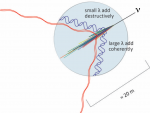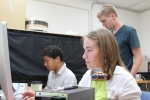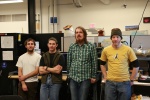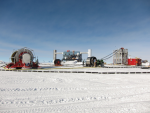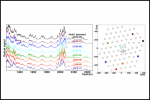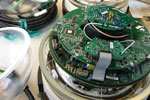Kael Hanson, WIPAC director and a professor of physics at UW–Madison, has been awarded a UW2020: WARF Discovery Initiative grant to explore the potential of the Askaryan radio detection method in the future upgrade of the IceCube Neutrino Observatory, the so-called IceCube-Gen2 facility.
The Cherenkov Telescope Array (CTA) will detect gamma rays with unprecedented precision. To do this, physicists have designed not only new telescope optics and cameras but also the required front-end electronics, including a new multichannel digitizer, dubbed TARGET.
From the most remote location on Earth, the IceCube Neutrino Observatory peers into deep space. The telescope uses thousands of light sensors built into a cubic kilometer of South Pole ice to reconstruct images of cosmic high-energy neutrinos. IceCube data must be corrected for tiny amounts of contamination, microscopic dust trapped within the ice of the telescope itself. These impurities originated here on Earth, as mineral dust lofted from continental landmasses and ash from ancient volcanic eruptions. First considered a nuisance, the dust in IceCube has become a subject for novel research, telling us vital stories about Earth’s past climate changes.

